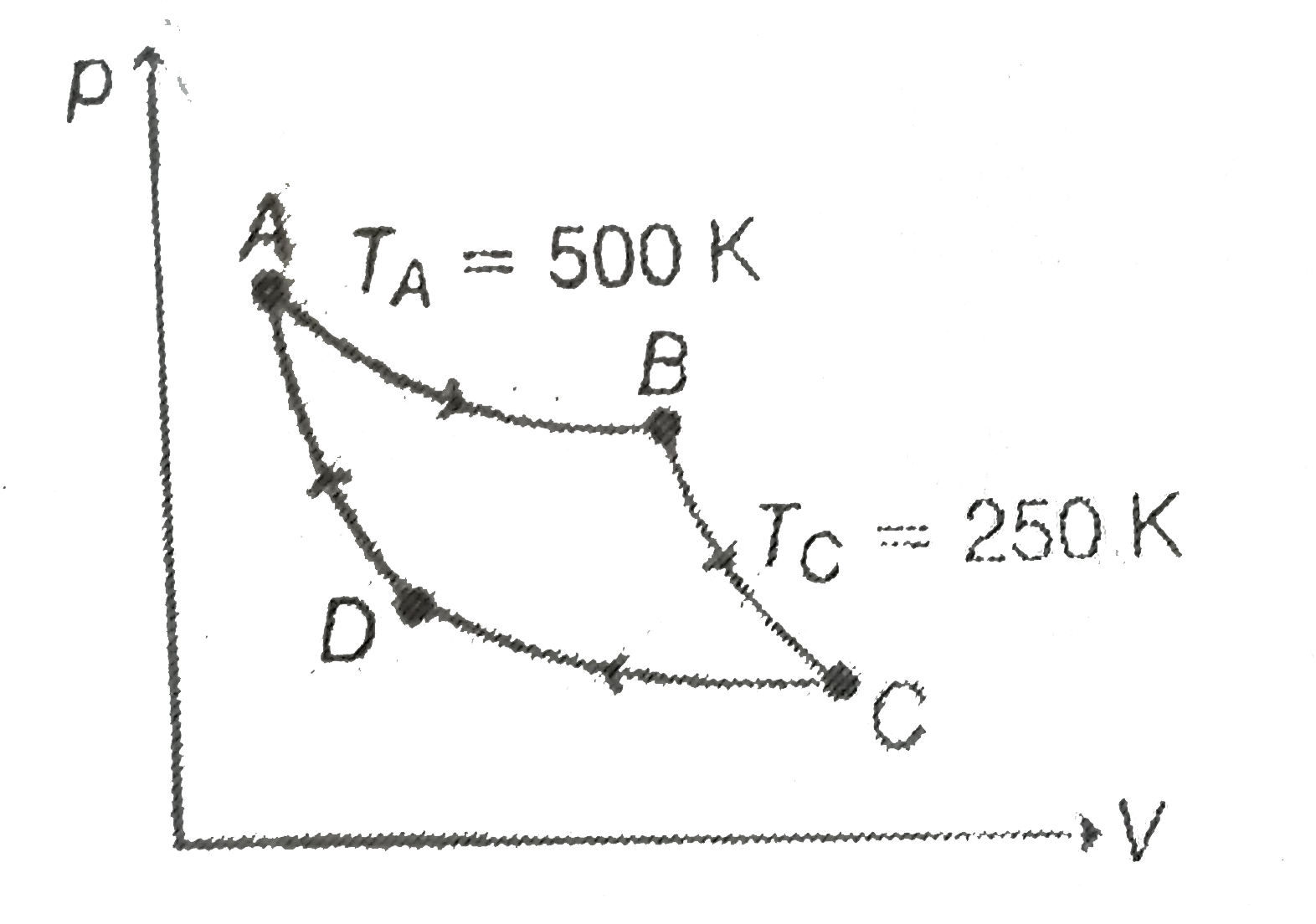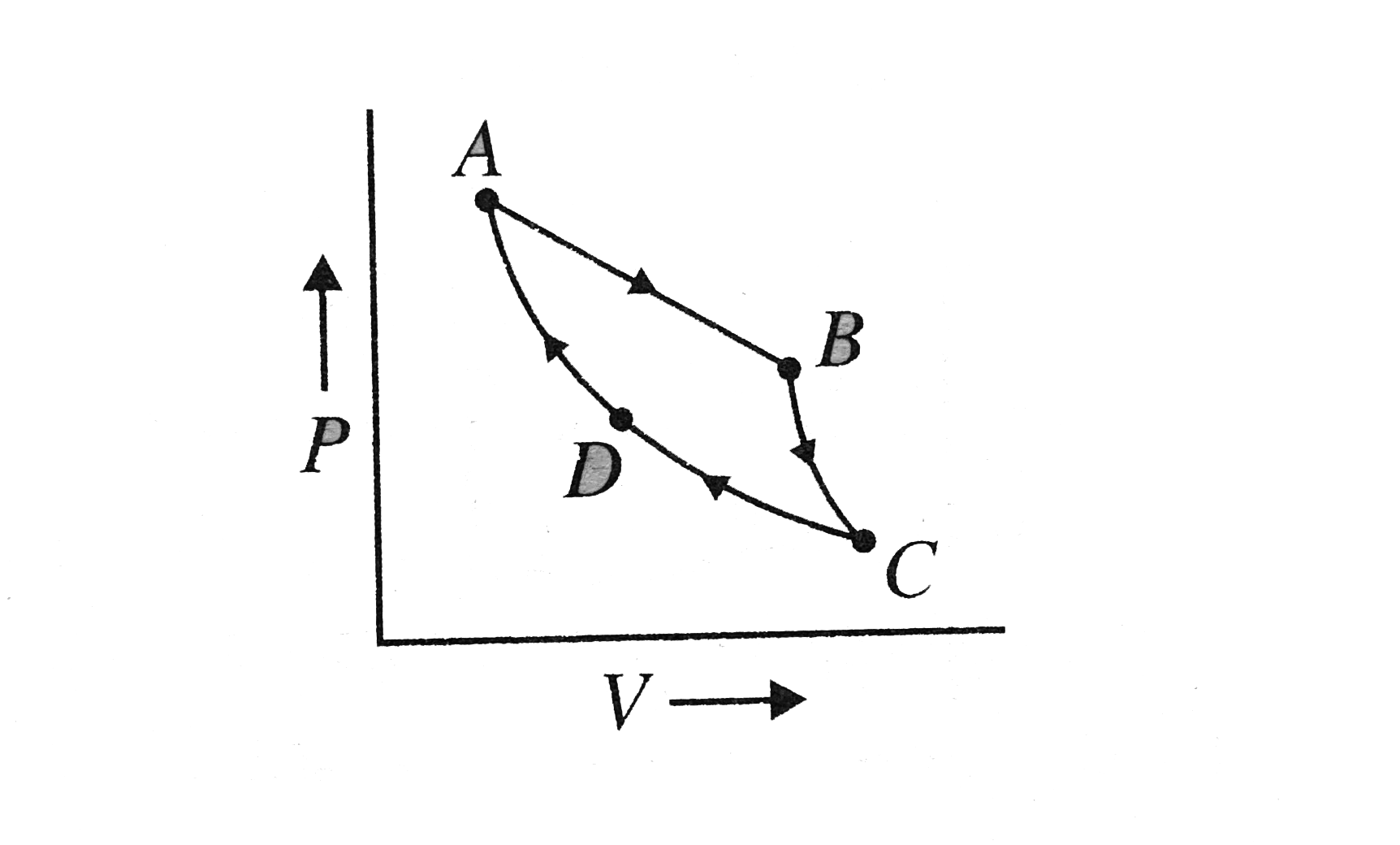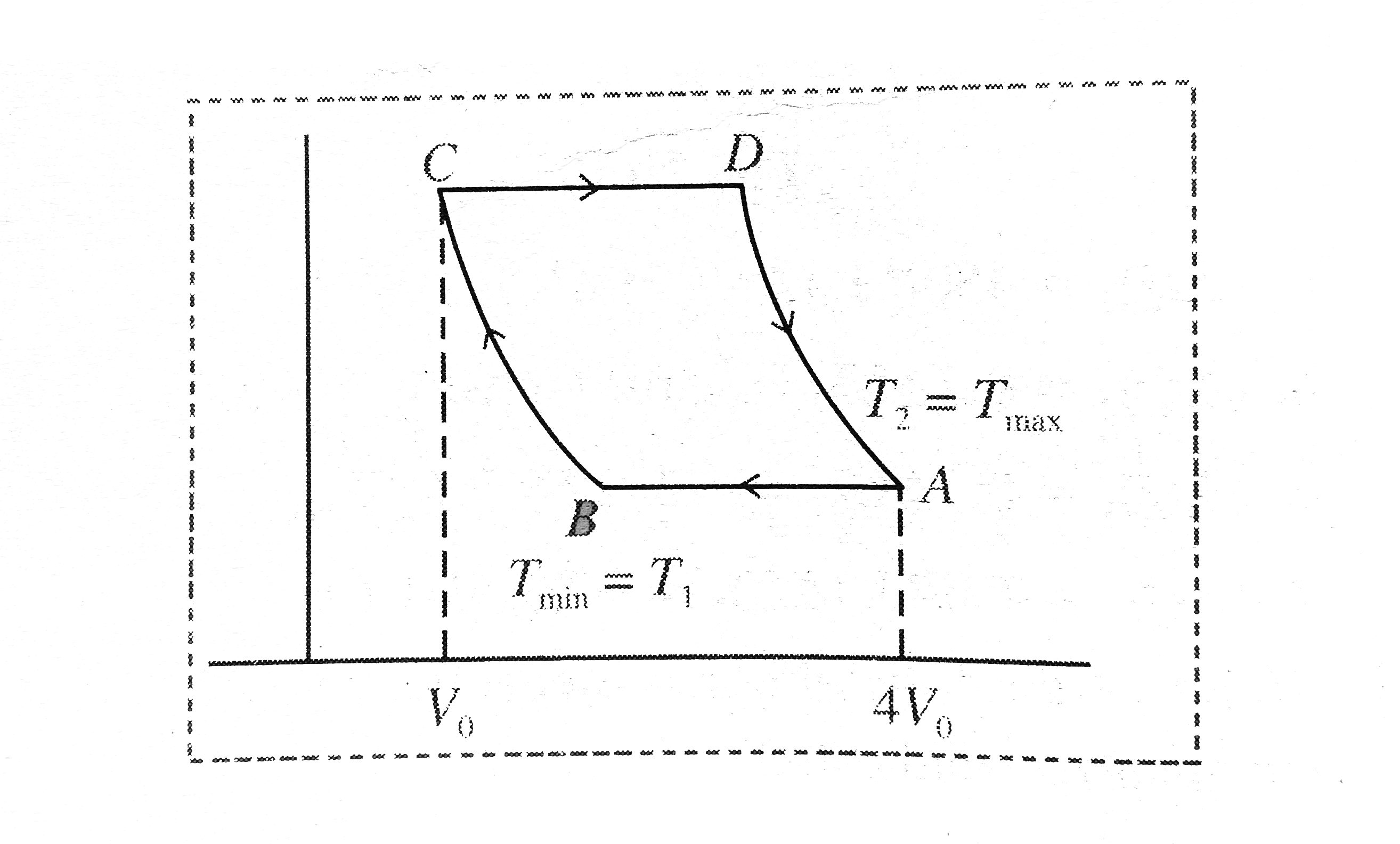A carnot cycle consists of
Two irreversible isothermal process and two irreversible adiabatic process
Two irreversible isothermal process and two reversible adiabatic process
Two reversible isothermal process and two reversible adiabatic process
Two reversible isothermal process and two irreversible adiabatic process
The correct Answer is:C
To solve the question about the components of a Carnot cycle, we will break down the process step by step.
1. Understanding the Carnot Cycle:
The Carnot cycle is a theoretical thermodynamic cycle that provides the maximum possible efficiency for a heat engine. It consists of four distinct processes.
Hint: Remember that the Carnot cycle is an idealized cycle that serves as a standard for comparing the efficiency of real heat engines.
2. Identifying the Processes:
The Carnot cycle consists of:
- Two isothermal processes (one for expansion and one for compression).
- Two adiabatic processes (one for expansion and one for compression).
Hint: Isothermal processes occur at a constant temperature, while adiabatic processes occur without heat exchange with the surroundings.
3. Describing the Isothermal Processes:
- Isothermal Expansion: The gas expands at a constant temperature, absorbing heat from the hot reservoir.
- Isothermal Compression: The gas is compressed at a constant temperature, releasing heat to the cold reservoir.
Hint: In isothermal processes, the internal energy of the gas remains constant because temperature does not change.
4. Describing the Adiabatic Processes:
- Adiabatic Expansion: The gas expands without heat exchange, causing its temperature to drop.
- Adiabatic Compression: The gas is compressed without heat exchange, causing its temperature to rise.
Hint: In adiabatic processes, all the work done on or by the gas results in a change in internal energy.
5. Conclusion:
Therefore, the Carnot cycle consists of two reversible isothermal processes and two reversible adiabatic processes.
Hint: The reversibility of the processes is crucial for achieving maximum efficiency in the Carnot cycle.
Final Answer:
The Carnot cycle consists of two reversible isothermal processes and two reversible adiabatic processes.
The Carnot cycle is a theoretical thermodynamic cycle that provides the maximum possible efficiency for a heat engine. It consists of four distinct processes.
The Carnot cycle consists of:
- Two isothermal processes (one for expansion and one for compression).
- Two adiabatic processes (one for expansion and one for compression).
- Isothermal Expansion: The gas expands at a constant temperature, absorbing heat from the hot reservoir.
- Isothermal Compression: The gas is compressed at a constant temperature, releasing heat to the cold reservoir.
- Adiabatic Expansion: The gas expands without heat exchange, causing its temperature to drop.
- Adiabatic Compression: The gas is compressed without heat exchange, causing its temperature to rise.
Therefore, the Carnot cycle consists of two reversible isothermal processes and two reversible adiabatic processes.
The Carnot cycle consists of two reversible isothermal processes and two reversible adiabatic processes.
Topper's Solved these Questions
Similar Questions
Knowledge Check
Consider a carnot cycle operating between source tempeature 750 K and sink temperature 350 K producing 1.25 J KJ of mechanical work per cycle, the heat transferred to the engine by the reservers
A1.34 KJB2.34 KJC3.34 KJD4.34 KJ
The temperature of food material in refrigerator is 4∘C and temperature of environment is 15∘C. If carnot cycle is used in its working gas, then find its carnot efficiency.
View SolutionA monoatomic ideal is used as the working substance for the carnot cycle shown in the figure. Processes AB and CD are isothermal, while processes BC and DA are adiabatic. During process AB, 400 J of work is done by the gasd on the surroundings. How much heat is expelled by the gas during process CD?

View SolutionDraw a Carnot cycle and on the diagram mark the work done by the engine.
View SolutionFigure. Shows the P−V diagram for a Carnot cycle. In this diagram

View SolutionAssertion : The Carnot cycle is useful in understanding the performance of heat engines.
Reason : The Carnot cycle provides a way of deteriming the maximum possible efficiency achievable with reservoirs of given temperatures.
View SolutionCarnot's cycle is said to have 25% efficiency when it operates between T (source) and 300K (sink). Temperature T is
View SolutionA monoatomic gas undergoes a cycle consisting of two isothermals and two isobarics. The minimum and maximum temperatures of gas during the cycle are T1=400K and T2=800K, respectively, and the ratio of maximum to minimum volume is 4.

The efficiency of the cycle is
View Solution
